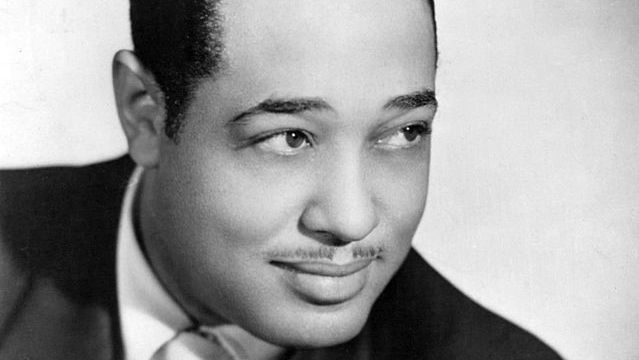Duke Ellington – A Complete Biography
Introduction
Edward Kennedy “Duke” Ellington (1899–1974) was a pianist, bandleader, and composer whose output and influence tower over American music. Over a 50-year career he led one of the most distinctive big bands in history, wrote or co-wrote well over a thousand works, and refused to be boxed in—what he called “beyond category.” Ellington became a national icon, performing worldwide and receiving the Presidential Medal of Freedom in 1969.

Childhood
Ellington was born on April 29, 1899, in Washington, D.C., to James Edward and Daisy Kennedy Ellington. Raised in a supportive, middle-class household, he began piano lessons at seven and showed early gifts both for visual art and music; he later passed on an art scholarship to pursue music. The nickname “Duke” attached to him in youth, a nod to his elegance.
As a teen he grew serious about the piano, absorbing ragtime and stride styles. He wrote his first composition—“Soda Fountain Rag” (also called “Poodle Dog Rag”)—around age 14–15, playing it by ear long before he learned to read music. He studied art at Armstrong Manual Training High School in Washington while gigging locally, a blend of disciplines that shaped his lifelong sense of style and craft.
Youth
By the late 1910s Ellington was leading small groups for dances around D.C., eventually forming ensembles that would evolve into “The Washingtonians.” In 1923 he moved to New York City, where his unit expanded from a sextet to a 10-piece band and began to make records and Broadway club appearances.
The breakthrough came in Harlem. In 1927 The Washingtonians replaced King Oliver at the Cotton Club; live radio broadcasts carried the Ellington sound nationwide. His early “jungle style”—with Bubber Miley’s plunger-mute growls, Joe “Tricky Sam” Nanton’s trombone effects, and blues-rooted melodies—made a sensation. Residencies at the Cotton Club (1927–31; 1937–38) helped him enlarge the band and his compositional ambitions.
Adulthood
Through the 1930s Ellington built a virtuoso orchestra around distinctive solo voices—Johnny Hodges, Harry Carney, Cootie Williams, Rex Stewart, Barney Bigard, and others—and wrote music tailored to them. In 1939 the composer-arranger Billy Strayhorn joined as Ellington’s closest collaborator; Strayhorn’s “Take the ‘A’ Train” became the band’s theme and a signature of their partnership.
The early 1940s yielded a flood of masterpieces (e.g., “Cotton Tail,” “Ko-Ko,” “Concerto for Cootie,” “Harlem Air Shaft”), often crafted for three-minute 78-rpm sides yet bursting with invention. Ellington also looked beyond the dance floor, writing suites and extended works and touring extensively at home and abroad.
After a postwar lull, a legendary appearance at the 1956 Newport Jazz Festival—capped by Paul Gonsalves’s marathon 27-chorus tenor solo on “Diminuendo and Crescendo in Blue”—reignited Ellington’s career and launched decades of world tours. He continued to premiere major works, collaborate across genres, and, in his late years, compose Sacred Concerts that united jazz idioms with choral and liturgical elements.
Honors piled up: among many decorations, Ellington received the Presidential Medal of Freedom in 1969 and, posthumously, a Pulitzer Prize Special Citation in 1999 recognizing his centennial and enduring cultural impact.
Major Compositions
Ellington’s catalog is vast; a selective map of landmarks illustrates his range and lasting imprint:
- Standards and ballads: “Mood Indigo” (1930), “Sophisticated Lady” (1933), “Solitude” (1934), “In a Sentimental Mood” (1935).
- Swing-era showpieces: “It Don’t Mean a Thing (If It Ain’t Got That Swing)” (1932), “Cotton Tail” (1940), “Ko-Ko” (1940), “Concerto for Cootie” (1940), “Harlem Air Shaft” (1940).
- Collaborations & band book: “Caravan” (with Juan Tizol, 1936), “Perdido,” “C-Jam Blues,” and Strayhorn’s “Take the ‘A’ Train.”
- Extended works & suites: Black, Brown and Beige (1943), Liberian Suite (1947), Such Sweet Thunder (1957), Far East Suite (1960s), and the Sacred Concerts (1965, 1968, 1973).
- Film & concert scores: Symphony in Black (1935) and Anatomy of a Murder (1959).
Death
Ellington died in New York City on May 24, 1974, at age 75, of cancer involving both lungs and pneumonia. His funeral at the Cathedral of St. John the Divine drew more than 12,000 mourners—friends, fellow musicians, and admirers who came to honor a singular American artist.
Conclusion
Duke Ellington transformed the possibilities of American music. He proved that a jazz orchestra could be a composer’s instrument; that blues feeling could share space with symphonic form; and that popular entertainment could coexist with high art. His band’s 1956 Newport triumph—now on the National Recording Registry—symbolizes both renewal and timelessness. For listeners and musicians alike, Ellington remains a compass point: elegant, inventive, generous, and, still, “beyond category.”

Comments are closed